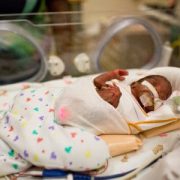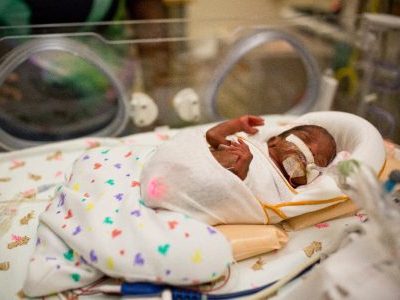NIH award will support intellectual and developmental disabilities research at Children’s National

Children’s National Hospital announces a $7 million award from the National Institutes of Health’s Eunice Kennedy Shriver National Institute of Child Health and Human Development (NICHD) to support the DC Intellectual and Developmental Disabilities Research Center (DC-IDDRC).
Children’s National Hospital announces a $7 million award from the National Institutes of Health’s Eunice Kennedy Shriver National Institute of Child Health and Human Development (NICHD) to support the DC Intellectual and Developmental Disabilities Research Center (DC-IDDRC). Through this award, the DC-IDDRC will enhance the recruitment and training of investigators, generate innovation and promote transdisciplinary research to facilitate the development, implementation and dissemination of new diagnostic and therapeutic advances for the care of individuals with intellectual and developmental disabilities.
The DC-IDDRC, led by Children’s National in partnership with George Washington University, Howard University and Georgetown University, is one of only 14 IDDRCs in the United States funded by NICHD. This long standing NICHD program supports researchers whose goals are to advance understanding of a variety of conditions and topics related to intellectual and developmental disabilities.
“Children’s National cares for one of the largest cohorts of children with developmental disabilities in the U.S. — which uniquely positions us to lead the way in both care and research of developmental disabilities in young children,” said Vittorio Gallo, Ph.D., interim chief academic officer and interim director of the Children’s National Research Institute, and principal investigator for the DC-IDDRC.
The research strategy for this period will address three key areas: neural development and neurodevelopmental disorders, fetal and neonatal brain injury and genetic disorders by leveraging the core facilities and core innovation — including the Genomics and Bioinformatics Core, Cell and Tissue Microscopy Core, Neuroimaging Core, Clinical Translational Core and Neurobehavioral Evaluation Core.
“In spite of tremendous advances in our understanding of how abnormalities in brain development cause neurodevelopmental disorders and developmental disabilities, integrated knowledge in all these areas of research is still lacking. In particular, it is still unknown how specific genetic defects and cellular abnormalities result in behavioral phenotypes,” said Gallo.
One in six children suffers from a chronic, complex neurodevelopmental disability — conditions such as intellectual disability, learning disability, attention deficit hyperactivity disorder, autism spectrum disorder, cerebral palsy and Down syndrome. For 20 years, the DC-IDDRC has been a home for researchers from different specialties and different institutions to discover new therapies and treatments for children with these types of neurodevelopmental disabilities.
“The DC-IDDRC promises to be a great vehicle to spawn new research and collaborative networks for D.C. area investigators,” said Chandan Vaidya, Ph.D., vice provost for faculty and professor at Georgetown University. “We will be examining whether a behavioral intervention to enhance self-regulation in adolescents with Autism changes how they learn and use computational modeling to understand learning strategy and identify associated changes in the brain using functional magnetic resonance imaging.”
The robust relationships and spirit of cooperation built over two decades of collaboration have laid a strong groundwork for the establishment of the expansive post-doctoral training program and continuous growth of the research programs within the DC-IDDRC. Gallo continues his efforts in expanding access to these programs and building a sustainable pipeline of young scholars from diverse backgrounds. The partnership between Children’s National and Howard University continues to play a crucial role in these goals.
The DC-IDDRC continues to work toward translating research findings into novel approaches and personalized treatments for people with developmental disabilities and their caregivers. This work will be amplified when the DC-IDDRC moves into the expanded facility at the Children’s National Research & Innovation Campus, which houses startup incubator programs and other support for device innovation.





